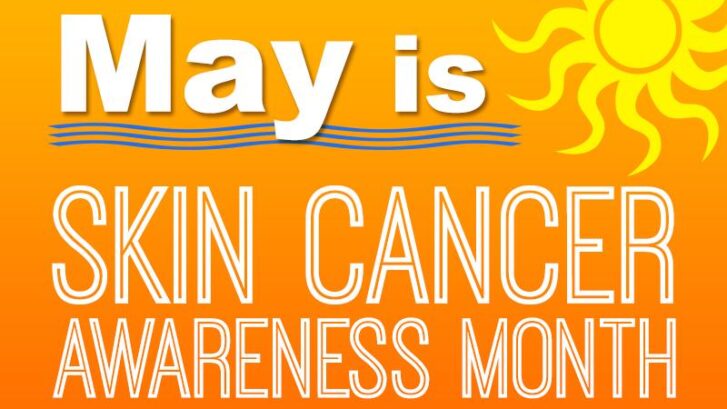What to Know About Sunscreens
Because May is Skin Cancer Awareness Month, our primary care doctors in Jupiter want to remind you of the dangers of sun exposure and remind you of the best way to avoid it.
It’s important to know the facts about skin cancer and the sun, along with exposure to tanning beds, because the National Cancer Institute (NCI) estimates that this year 99,780 people in the U.S. will be diagnosed with melanomas of the skin, and that 7,650 people will die from this most deadly form of cancer.
But a proper use of an effective sunscreen can prevent most skin cancers.
About sunscreen
“Unfortunately, skin cancer rates are still rising, and we do everything we can to try to minimize that, and using sunscreen is one component of that,” Darrell Rigel, clinical professor of dermatology at Mount Sinai Icahn School of Medicine in New York City, told CNN earlier this month.
Exposure to the ultraviolet (UV) rays of the sun is the leading cause of both skin cancer and premature wrinkling of the skin. There are two main types of sunscreens used to protect yourself from UV rays: chemical and mineral-based.
When they were first manufactured, most sunscreens had a sun-protection factor (SPF) of 15. That means that if you’d normally burn with ten minutes’ exposure to the sun, an SPF of 15 would allow you to safely stay in the sun for 15 times longer than that, or 150 minutes. As more research was done on sun exposure’s effect on the skin, researchers recognized the need for greater protection, so SPF factors were boosted to 30 and higher.
Chemical issues
There are some problems with chemical sunscreens.
First, because they break down when exposed to the sun, they lose their protective ability after less than two hours, and must be reapplied frequently. They can also be affected by excessive heat exposure, which means if you store them in hot places like a car or beach bag, they can lose effectiveness well before their expiration dates. But there’s no way to tell this just by looking at the product.
Another problem with chemical sunscreens is that, when applied, they are absorbed into the skin.
This is concerning because the active ingredients in many sunscreens, especially oxybenzone, may cause endocrine disruption in the body. That is, once absorbed into the bloodstream they may disrupt normal functioning of the hormones, including thyroid, estrogen, progesterone, and testosterone.
In addition, some studies have linked oxybenzone to harm in marine life when it gets into the water, leading some regions and countries to ban it. And the U.S. Food and Drug Administration (FDA) cautions that the ingredient may not be safe for use in children “because of the higher potential for higher absorption and bioaccumulation.”
A better alternative
The other main type of sunscreen is mineral-based, containing either zinc oxide or titanium dioxide or a combination of both. Comprising these crushed minerals, the sunscreen remains on top of the skin, forming a barrier against the sun’s rays. And unlike chemical sunscreens, these do not break down in the sun. Proposed regulations from the FDA say that these two ingredients are the only sunscreen ingredients that are considered to be both safe and effective.
In the past, these types of sunscreens left a telltale white coating on the skin.
But a newer generation of mineral sunscreen has addressed this problem by crushing the minerals into even smaller particles, which makes the whitening effect negligible. Mineral sunscreens also are better tolerated by far more users, including those with sensitive skin.
The non-profit Environmental Working Group (EWG) released its annual list of recommended sunscreens this month, including options for kids.
So which one should you use?
“There’s not one product that is going to be appropriate for everyone,” Adam Friedman, professor and chair of the department of dermatology at the George Washington School of Medicine and Health Sciences, told CNN.
“The best sunscreen is the one you will use again and again and again,” he said.
The right way to apply sunscreens
Whichever type you select, it’s important to use it correctly.
The American Academy of Dermatology (AAD) offers the following tips for applying sunscreen:
1. Your sunscreen should have an SPF of at least 30 and say “broad-spectrum protection” on the label. If your skin is sensitive to sunscreen, use one that is free of all preservatives, para-aminobenzoic acid (PABA), chemicals, perfumes, and alcohol.
2. Apply sunscreen generously before going outdoors. It takes approximately 15 minutes for your skin to absorb it enough to protect you.
3. Apply enough sunscreen to cover all exposed skin. Most adults need about one ounce—enough to fill a shot glass—to fully cover their body. Rub the sunscreen thoroughly into your skin.
4. Apply sunscreen to all bare skin. Remember your neck, face, ears, tops of your feet, and legs. For hard-to-reach places, ask someone to help or use a spray sunscreen. If you have thinning hair, either apply sunscreen to your scalp or wear a wide-brimmed hat. To protect your lips, apply a lip balm with an SPF of at least 15.
5. Reapply sunscreen every two hours, or immediately after swimming or sweating.
6. Sunscreen stored in hot areas like a car can lose potency more quickly. The ideal storage temperature is 77 degrees Fahrenheit.

